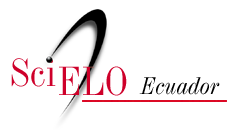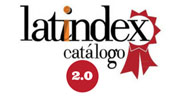MOOCEP: Un método para construir cursos masivos para Adultos Mayores: Usando una creación MOOCEP
DOI:
https://doi.org/10.29019/enfoqueute.v9n1.242Palabras clave:
e-learning, evaluation, MOOCEPResumen
Hoy en día, la población de adultos mayores se ha incrementado significativamente en relación al total de la población mundial, así también este segmento en los últimos años ha mostrado una mayor adherencia e interés a los avances tecnológicos, entre ellos el Internet y sus servicios con la finalidad de desarrollar diferentes actividades tales como entretenimiento, información de actualidad, aprendizaje de diferentes tópicos, entre otros. Sin embargo, las aplicaciones y sitios web no tienen en cuenta los requisitos específicos de las personas de la tercera edad. De ahí, es necesario contar con metodologías, procesos y herramientas, las mismas que tengan en cuenta formas apropiadas de interacción, específicas para este sector vulnerable de la población. Este artículo es una extensión al presentado en la conferencia INCISCOS 2017, en la cual se propuso una metodología para la creación de cursos masivos en línea denominada MOOCEP; y en este trabajo, se ha visto conveniente probar los artefactos creados utilizando la misma, por medio de la presentación de dichos recursos a personas de la tercera edad, con la finalidad de realizar una comparativa del antes y después del conocimiento de los diversos temas presentados en la plataforma de aprendizaje.
Descargas
Referencias
Arch, A. (2009). WAI Guidelines and Older Web Users: Findings from a Literature Review.
Arpetti, A., Baranauskas, M. C. C., & Leo, T. (2014). Eliciting Requirements for Learning Design Tools. In C. Rensing, S. de Freitas, T. Ley, & P. J. Muñoz-Merino (Eds.), Open Learning and Teaching in Educational Communities: 9th European Conference on Technology Enhanced Learning, EC-TEL 2014, Graz, Austria, September 16-19, 2014, Proceedings (pp. 1–14). Cham: Springer International Publishing. https://doi.org/10.1007/978-3-319-11200-8_1
Barajas Saavedra, A. (2007). Modelo Instruccional para el Diseño de Objetos de Aprendizaje: Modelo MIDOA. E-Spacio.Uned.Es, 52(449), 0. Retrieved from http://e-spacio.uned.es/fez/eserv.php?pid=bibliuned:19245&dsID=n03barajas07.pdf
Baruque, L. B., & Melo, R. N. (2004). Learning theory and instruction design using learning objects. Journal of Educational Multimedia and Hypermedia, 13(4), 343–370.
Basili, V. R. (1992). The Experimental Paradigm in Software Engineering. In Workshop on Experimental Software Engineering Issues: Critical Assessment and Future Directions (pp. 1–12). London, UK: LNCS 706. https://doi.org/10.1007/3-540-57092-6_91
Basili, V. R., & Rombach, H. D. (1988). The TAME Project: Towards lmprovement-Oriented Software Environments. IEEE Transactions on Software Engineering, 14(6), 758–773. https://doi.org/10.1109/32.6156
Beltrán, P., Cedillo, P., Rodríguez-Ch, P., & Bermeo, A. (2017). MOOCEP: Towards a Method for Building Massive Open Online Courses for Elderly People. In International Conference on Information Systems and Computer Science. Quito, Ecuador.
Bong, W. K., & Chen, W. (2016). How Accessible Are MOOCs to the Elderly? In K. Miesenberger, C. Bühler, & P. Penaz (Eds.), Computers Helping People with Special Needs: 15th International Conference, ICCHP 2016, Linz, Austria, July 13-15, 2016, Proceedings, Part I (pp. 437–444). Cham: Springer International Publishing. https://doi.org/10.1007/978-3-319-41264-1_60
Cedillo, P., Beltran, P., & Rodriguez-ch, P. (2017). Evaluation of the Accessibility of MOOCs Oriented to Elderly People Evaluación de la Accesibilidad de MOOC Orientados a la Tercera Edad. Maskana, (Special Issue), 321–332.
Gamage, D., Femando, S., & Perera, I. (2015). Effectiveness of eleaming: Grounded theory approach. In Moratuwa Engineering Research Conference (MERCon), 2015 (pp. 336–341). https://doi.org/10.1109/MERCon.2015.7112369
Ghirardini, B. (2011). E-learning methodologies: A guide for designing and developing e-learning courses. Food and Agriculture Organization of the United Nations (FAO). https://doi.org/I2516E/1/11.11
Gulliksen, J., & Harker, S. (2004). The software accessibility of human-computer interfaces---ISO Technical Specification 16071. Universal Access in the Information Society, 3(1), 6–16. https://doi.org/10.1007/s10209-003-0079-1
Meister, J. (2013). How MOOCs Will Revolutionize Corporate Learning and Development.
Moody, D. L. (2001). A Practical Method for Representing Large Entity Relationship Models, P.h.D. Thesis. University of Melbourne, Australia.
Rodriguez-ch, P., Cedillo, P., Beltran, P., & Ortiz, J. (2017). MOOCEP : A Method for Building Massive Open Online Courses for Elderly People The Analysis Activity. In 47th Annual Frontiers in Education (FIE). Indianápolis, USA.
Sanchez-Gordon, S., & Luján-Mora, S. (2013). Web accessibility of MOOCs for elderly students. In Information Technology Based Higher Education and Training (ITHET), 2013 International Conference on (pp. 1–6). https://doi.org/10.1109/ITHET.2013.6671024
Sanz, C., Moralejo, L., & Barranquero, F. (2017). Metodología CROA. Retrieved February 11, 2018, from http://croa.info.unlp.edu.ar/
Tutoky, G., Babic, F., & Wagner, J. (2013). ICT-based solution for elderly people. In Emerging eLearning Technologies and Applications (ICETA), 2013 IEEE 11th International Conference on (pp. 399–404). https://doi.org/10.1109/ICETA.2013.6674466
UTEID. (2014). Guía Metodológica para la Planificación, Diseño e Impartición de MOOC. Madrid, Spain.
W3C. (2017). Web Content Accessibility Guidelines (WCAG) Overview. Retrieved April 15, 2017, from https://www.w3.org/WAI/intro/wcag
Publicado
Número
Sección
Licencia
Los autores retienen todos sus derechos (© copyright).
- Los autores retienen sus derechos de marca y patente, y también sobre cualquier proceso o procedimiento descrito en el artículo.
- Los autores retienen el derecho de compartir, copiar, distribuir, ejecutar y comunicar públicamente el artículo publicado en Enfoque UTE (por ejemplo, colocarlo en un repositorio institucional o publicarlo en un libro), siempre que se dé el reconocimiento de su publicación inicial en la revista Enfoque UTE.
- Los autores retienen el derecho a hacer una posterior publicación de su trabajo, de utilizar el artículo o cualquier parte de aquel (por ejemplo: una compilación de sus trabajos, notas para conferencias, tesis, o para un libro), siempre que indiquen la fuente de publicación (autores del trabajo, revista, volumen, número y fecha).
























